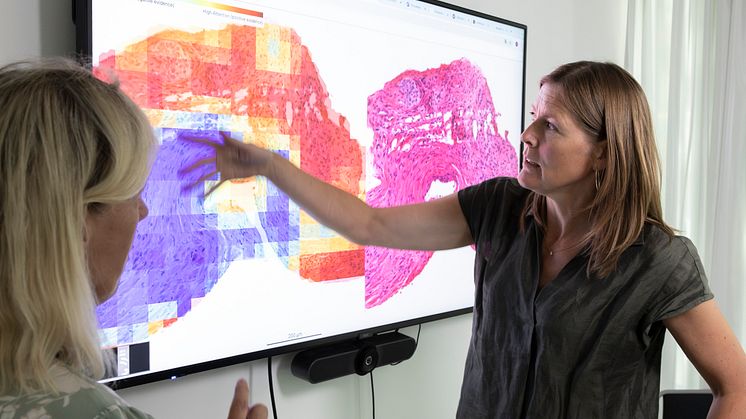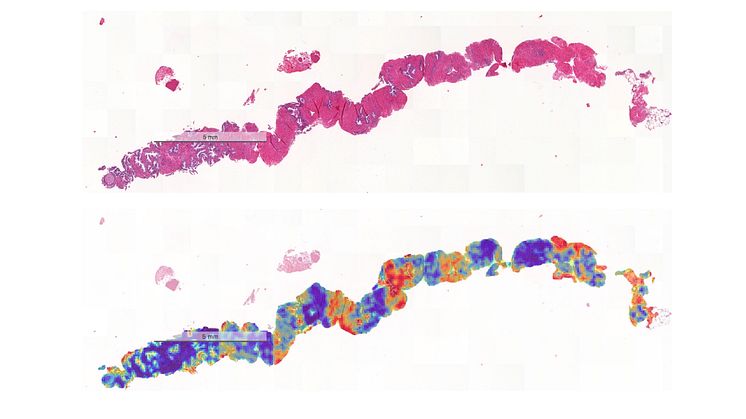
Press release -
AI can find cancer pathologists miss
Men assessed as healthy after a pathologist analyses their tissue sample may still have an early form of prostate cancer. Using AI, researchers at Uppsala University have been able to find subtle tissue changes that allow the cancer to be detected long before it becomes visible to the human eye.
Previous research has demonstrated that AI is able to detect tissue changes indicative of cancer. In the current study, published in Scientific Reports, the researchers show that AI can also find cancers missed by pathologists.
“The study has been nicknamed the ‘missed study’, as the goal of finding the cancer was ‘missed’ by the pathologists. We have now shown that with the help of AI, it is possible to find signs of prostate cancer that were not observed by pathologists in more than 80 per cent of samples from men who later developed cancer,” says Carolina Wählby, who led the AI development in the study.
The project is based on a collaboration with Umeå University, where the researchers collected samples from men called for sample-taking over a number of years. All 232 men in the study were assessed as healthy when their biopsies were examined by pathologists. After less than two-and-a-half years, half of the men in the study had developed aggressive prostate cancer, while the rest were still cancer-free eight years later.
AI trained to detect signs of cancer
As all tissue samples were initially assessed as negative, the researchers developed a new way to train the AI tool. It was trained by analysing each biopsy image bit by bit, with the assumption that abnormal patterns ought to be present somewhere in the biopsies that came from patients who later developed aggressive cancer, while the other images should not contain such patterns. The AI was then tested on an independent set of images.
“When we looked at the patterns that the AI ranked as informative, we saw changes in the tissue surrounding the glands in the prostate – changes also observed in other studies. This shows that AI analysis of routine biopsies can detect subtle signs indicating clinically significant prostate cancer before it becomes obvious to a pathologist,” says Wählby.
The researchers suggest that this type of analysis could be used to decide how soon men who have been assessed as healthy should be followed up. The imaging data collected and the researchers’ methods are openly available for further research and development.
Contact
Carolina Wählby, Professor of Quantitative Microscopy at the Department of Information Technology at Uppsala University and SciLifeLab
Email: carolina.wahlby@it.uu.se
Phone: +46 (0)72 701 71 51
Publication
Chelebian E, Avenel C, Järemo H, Andersson P, Bergh A, Wählby C. Discovery of tumour indicating morphological changes in benign prostate biopsies through AI. Sci Rep. 2025 Aug 21;15(1):30770. DOI: 10.1038/s41598-025-15105-6
Topics
Categories
Founded in 1477, Uppsala University is the oldest university in Sweden. With more than 50,000 students and 7,500 employees in Uppsala and Visby, we are a broad university with research in social sciences, humanities, technology, natural sciences, medicine and pharmacology. Our mission is to conduct education and research of the highest quality and relevance to society on a long-term basis. Uppsala University is regularly ranked among the world’s top universities. www.uu.se



